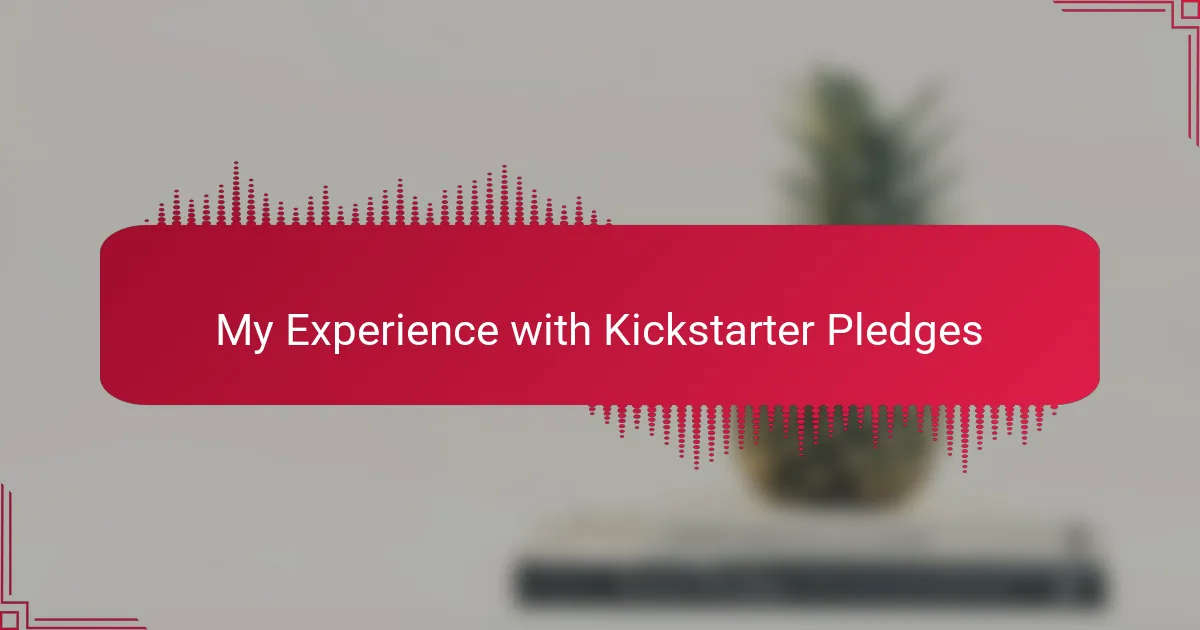Key takeaways
- Kickstarter pledges foster community and direct engagement between creators and backers, transforming projects into collaborative journeys.
- Setting realistic funding goals and maintaining open communication are crucial for building trust and excitement within the supporter community.
- Diverse pledge tiers enhance backer motivations and deepen engagement, allowing creators to offer unique rewards for varying levels of support.
- Sharing behind-the-scenes content and involving backers in the creative process strengthens emotional connections and shared ownership of the project.
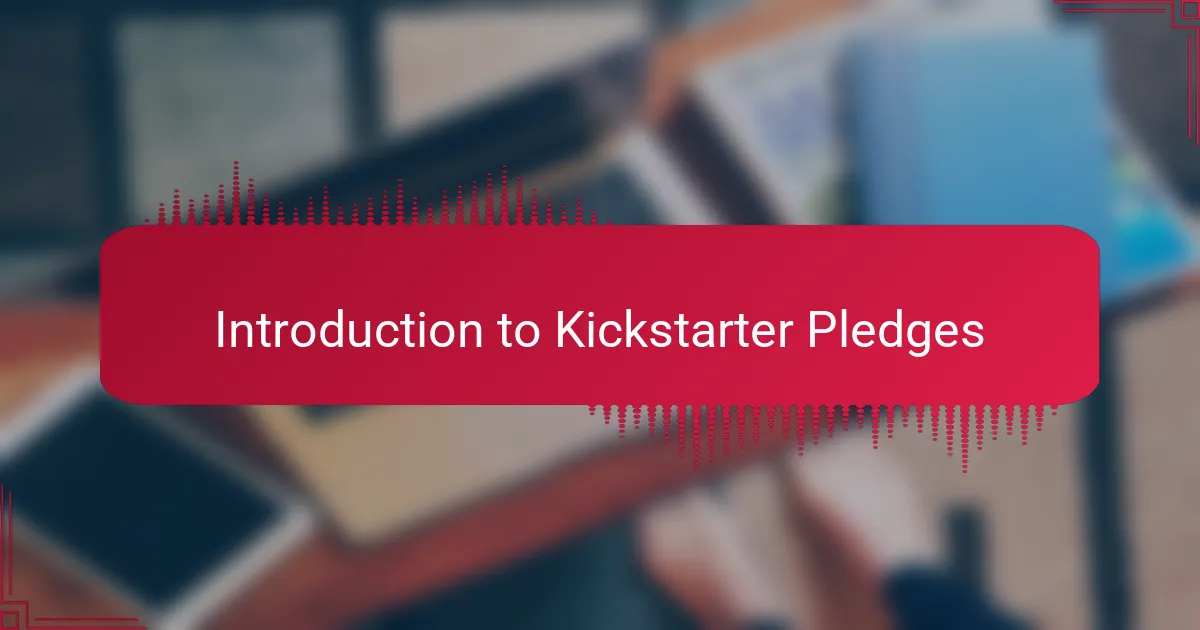
Introduction to Kickstarter Pledges
Kickstarter pledges have become an incredible way for creators to bring their projects to life. As a comic book author, I’ve seen firsthand how these pledges can connect you deeply with your audience. It’s not just about funding; it’s about building a community around your work.
When I launched my first comic on Kickstarter, the excitement was palpable. Each pledge felt like a vote of confidence, fueling my creativity, and rewarding backers with exclusive content. I can’t emphasize enough how rewarding it is to see others believe in your vision, transforming a personal project into a collective journey.
Here’s a straightforward comparison of different types of Kickstarter pledges and their impacts:
| Pledge Type | Impact on Project |
|---|---|
| Standard Pledge | Helps cover basic production costs. |
| Premium Pledge | Provides exclusive rewards, enhancing backer engagement. |
| All-in Pledge | Builds a loyal community, creating a sense of belonging. |
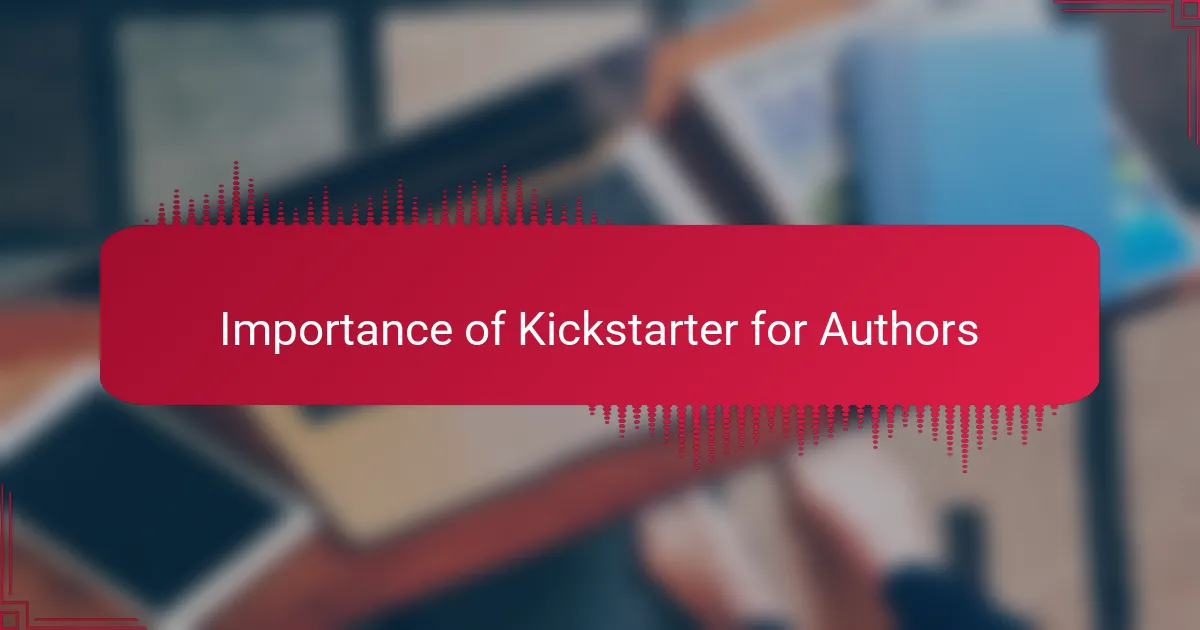
Importance of Kickstarter for Authors
Kickstarter has become a game changer for authors, particularly in the comic book world. I can vividly recall the excitement I felt when I launched my first Kickstarter campaign. It was a blend of hope and nervousness, but the support I received was overwhelming, validating my creative efforts.
Here are some key reasons why Kickstarter is crucial for authors:
– **Funding Support**: It provides the necessary capital to bring creative projects to life without the constraints of traditional publishing.
– **Community Engagement**: Authors can build a dedicated fanbase early on through direct interaction with backers.
– **Market Validation**: Successfully funded projects often indicate a market demand, helping authors gauge interest.
– **Creative Freedom**: Authors maintain creative control, allowing them to produce work that reflects their vision.
– **Brand Building**: Running a campaign establishes an author’s brand and identity in the competitive comic book landscape.
My experience showed me that Kickstarter is not just about funding; it’s about connecting with others who share your passion.
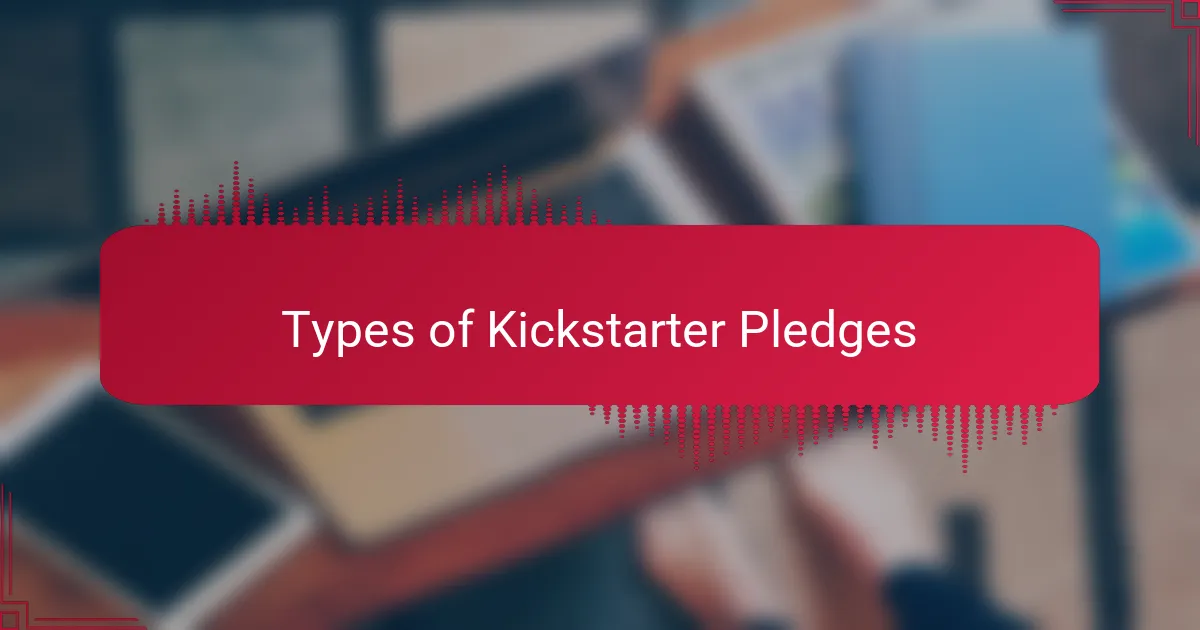
Types of Kickstarter Pledges
When I first explored Kickstarter, I was amazed by the variety of pledge types available. Each tier offers different rewards, catering to both small backers and major supporters. I remember backing a comic project at the $25 level, excited to receive a signed copy, only to discover that higher tiers included original sketches! That little surprise sparked my passion for examining how each pledge can uniquely impact both the creator and the backer.
The distinction between reward levels not only motivates backers to pledge more but also helps creators gauge interest in various aspects of their projects. I’ve observed that some creators include exclusive content, like behind-the-scenes access or additional bonus materials, which can really enhance the experience for those who support them. It made me reflect on how much backers value that personal connection and insider knowledge.
Here’s a simple comparison of some common pledge types you might encounter on Kickstarter:
| Pledge Level | Typical Rewards |
|---|---|
| Low Tier ($1 – $25) | Digital rewards, thank you notes |
| Mid Tier ($26 – $50) | Printed copies, exclusive updates |
| High Tier ($51 and up) | Original artwork, personal meet-and-greet |
This table summarizes how rewards can escalate and cater to different backer motivations, and I’ve personally found that these tiers not only enhance commitment but also deepen engagement with the creative process.

Strategies for Successful Campaigns
When I think about successful Kickstarter campaigns, I remember the thrill of launching my first project. I quickly learned that having a well-defined goal and a clear value proposition is crucial. It’s essential to communicate what makes your comic unique and why backers should care. For example, I spent hours crafting a compelling video that explained my story and showcased my art. It helped me connect on a personal level with potential backers, which I found to be a game changer.
One strategy that really worked for me was building a community before launching. I engaged with fellow comic book enthusiasts on social media and through local events. By sharing sneak peeks and behind-the-scenes content, I created buzz around my project. I also made sure to keep my supporters updated throughout the campaign, as transparency fosters trust.
Here are some proven strategies for a successful Kickstarter campaign:
– Set realistic funding goals to motivate backers.
– Create enticing reward tiers that resonate with your audience.
– Prepare and share engaging visuals, including art and video.
– Leverage social media to build anticipation and share progress.
– Foster a sense of community by communicating with backers regularly.
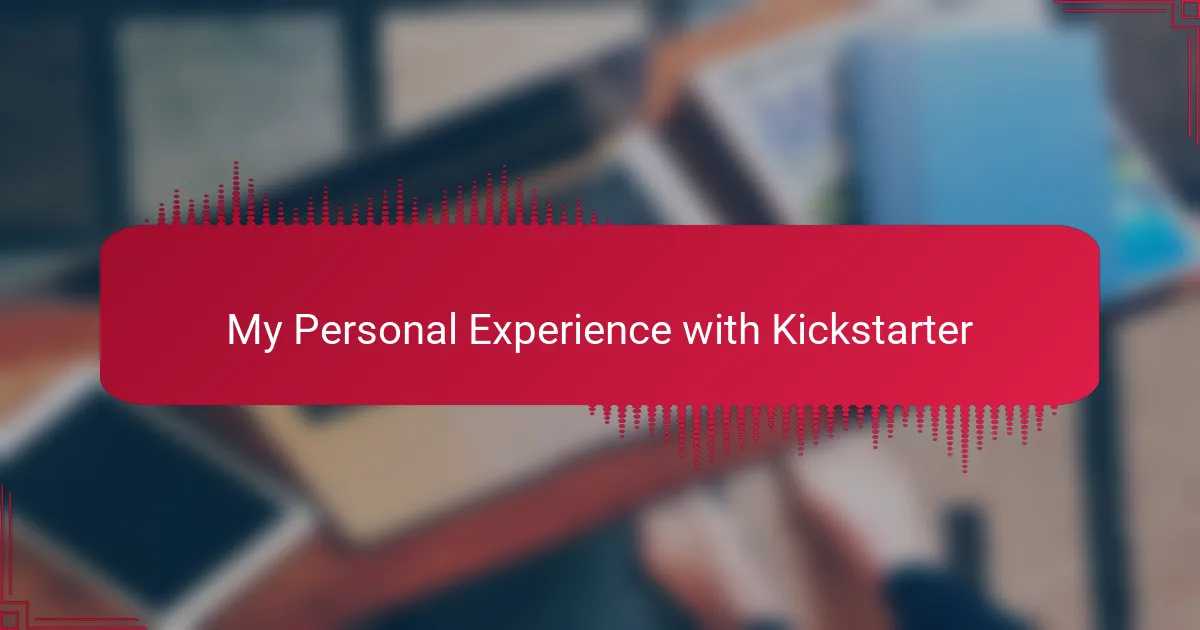
My Personal Experience with Kickstarter
When it comes to Kickstarter, my journey has been quite eye-opening. I remember launching my first comic book project and feeling a mix of excitement and anxiety. Engaging with backers was thrilling; it felt like a community rallying around my vision. The support I received was not just financial but also emotional, driven by shared passion for the art form.
One memorable moment was when a backer left a heartfelt message about how my story resonated with them. Hearing that brought a flood of motivation to keep pushing through the challenges of creation. Ultimately, my experience taught me the power of connection—Kickstarter is not merely a platform for funding but a way to build meaningful relationships with fans.
| Aspect | My Experience |
|---|---|
| Project Launch | Excitement mixed with anxiety |
| Community Engagement | A supportive network rallying around my work |
| Emotional Connection | Messages from backers motivated me |
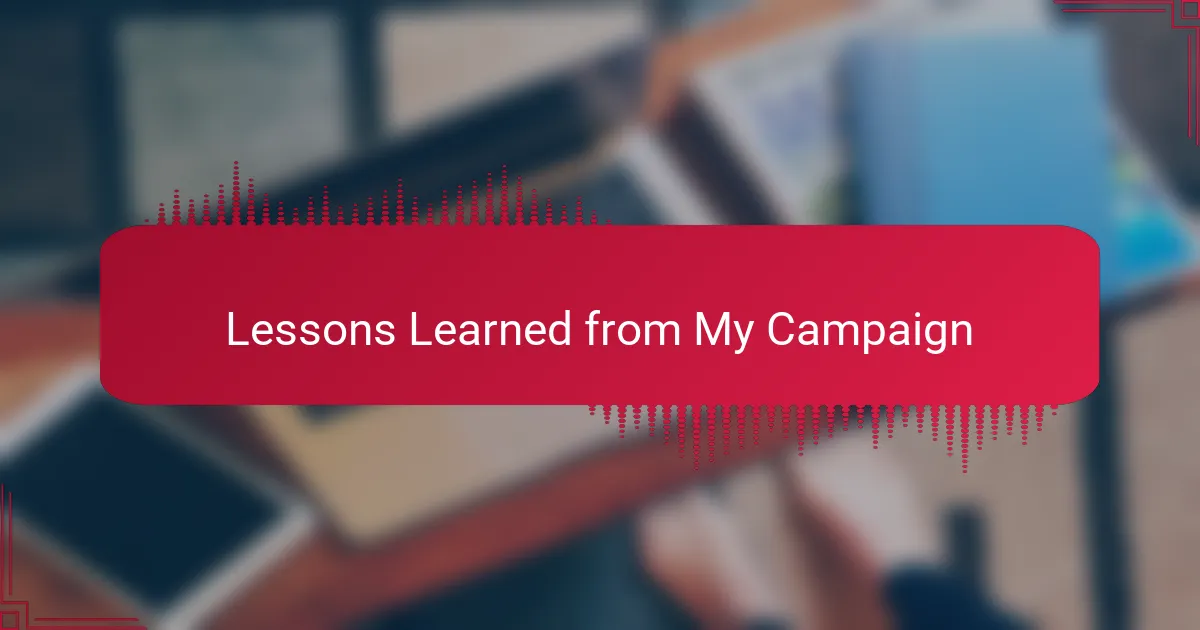
Lessons Learned from My Campaign
Sure! Here are my thoughts under the heading ‘Lessons Learned from My Campaign’:
Running my Kickstarter campaign taught me the importance of communication. I quickly learned that keeping backers informed fostered a sense of community and trust. For instance, when I encountered unexpected delays in production, I shared updates with my backers. I was surprised by their understanding and support, which reinforced the bond we had created.
Another key lesson was the significance of setting realistic goals. Initially, I was overly ambitious, aiming for a funding target that didn’t realistically consider production costs. After recalibrating, I found a more manageable goal that felt attainable and kept the excitement high.
Finally, I realized that engaging with my backers goes beyond just updates; it’s about inviting them into the creative process. I started to share sketches and concept art, making them feel like a part of the journey. It was heartwarming to receive feedback that influenced my work, making the final product feel like a shared achievement.
Now, let’s summarize these insights in a comparison table:
| Lesson | Insight |
|---|---|
| Communication | Regular updates build trust and community. |
| Realistic Goals | Setting achievable targets maintains excitement. |
| Engagement | Involving backers creates shared ownership of the project. |
